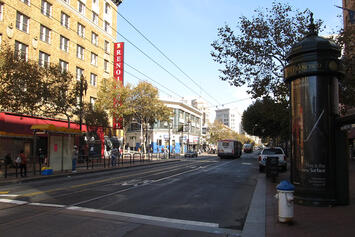
The recent announcement that Ian Jacobs, a scion of the famous Toronto-based Reichmann real estate clan, was coming to buy upwards of $900 million of San Francisco real estate, has offered the beleaguered California city a rare moment of hope. Some suggest that we could see a repeat of New York’s recovery from its nadir in the 1970s, during which the Reichmanns made a fortune gobbling up depressed buildings shortly before the city’s resurgence.
Yet any effort to restore San Francisco’s appeal will need more than an infusion of vulture capital. The city’s problems are essentially demographic and political, and have transformed San Francisco from an icon to a disaster zone, particularly as workers opt for remote work. The city’s office vacancy rate continues to rise, now surpassing 35%, the highest in its history.
To be sure, San Francisco has been losing its middle class for decades, replaced initially by young single people, many of whom are tied to the tech industry. But as early as 2015, the city began losing net domestic migrants as growth shifted to the further exurbs.
Since the pandemic, the city’s population has dropped and its social problems, long festering, have become a running sore. That’s likely why up to 10% of San Francisco’s residents have left the city — far more than in New York. “A lot of people have had it,” Heather Gonzalez, a longtime Democratic activist and mother of two, told me. “We have had neighbours and an elderly grandfather beat up on a bus and my kids have to watch people poop in public on Market Street. This is what we have to go through.”
Yet there is some hope, Gonzalez suggests. She points to the recent recall of ultra progressives including the District Attorney and three school board members. There’s also been a concerted effort by moderate Democrats to root the radical Left’s hold on the party as well as an effort to replace several far-Left members of the Board of Supervisors.
Amid a severe budget deficit, these efforts are critical. The city’s understaffed police department is almost certain to lose the battle for resources with the city’s dominant and fervently Leftist public employee unions. That the city now suffers the second highest violent crime rate in California illustrates just how important this battle is.
These reform efforts finally have some backing now from the tech oligarchs, who in recent years have been indifferent or even supportive of the progressive agenda. This has roiled the Left-wing activists who see any movement backed by the billionaire class as a hostile takeover.
Yet even if the city somehow regains its ballast, Reichman may be looking at the wrong places to invest. Although the office market may recover, the movement of business out of the state continues in a way far more profound than in New York back in the 1970s.
Read the rest of this piece at UnHerd.
Joel Kotkin is the author of The Coming of Neo-Feudalism: A Warning to the Global Middle Class. He is the Roger Hobbs Presidential Fellow in Urban Futures at Chapman University and Executive Director for Urban Reform Institute. Learn more at joelkotkin.com and follow him on Twitter @joelkotkin.
Photo: Ken Lund, via Flickr under CC 2.5 License.













vs NY
Would like to see #s on this--the NY (state and city) exodus was quite a benchmark:
"the movement of business out of the state continues in a way far more profound than in New York back in the 1970s."